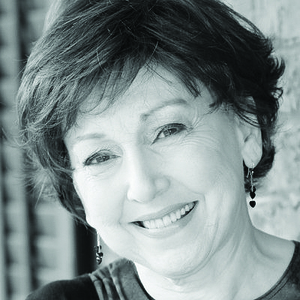

Mary Lucy Bivins
Thousands have seen Mary Lucy Bivins on the stage at Barter Theatre, but many may not have seen another of her talents – she is a folk artist specializing in fraktur.
Fraktur is an 18th and 19th-century folk art tradition. The name is derived from the broken or "fractured" appearance of the lettering. "It was the layman's version of manuscript illumination, originally practiced by scribes in the middle ages," says Bivins.
"German immigrants brought this tradition to America. It became particularly identified with Pennsylvania German settlers. Among the early artists were clergymen, who traveled to communities documenting births and marriages. It was taught in German parochial schools as a tool for writing and penmanship. The tradition died out among Germanic communities with the advent of the public school system."
Bivins discoved fraktur when she "walked away from the stage for a decade when I married and had children. I was home with my sons and fraktur became a creative outlet."
She is self-taught in the art. "I do not have a background or training in visual arts. That is why this folk art tradition is a perfect fit for me." Having a BA in history and living in Old Salem surrounded by other decorative art forms also contributed to her interest in pursuing fraktur. "Interestingly, while Salem, N.C., was founded by the Moravian sect, they did not practice fraktur, which was largely practiced among the Amish, Mennonite and Lutheran sects wherever they settled," she points out.
So Bivins, part historian and part artist, used the talents of both disciplines to find her own way to fraktur. She combined her interest in calligraphy, drawing and painting to help guide her. "The result was my becoming a contemporary fraktur artist in the 1970s, not only to nurture my creativity, but also to raise awareness of this early art form. Happily, it blossomed into a business of commissioned work for roughly a decade.
"I studied the work of early artists and the history of their tradition. This included their social and cultural history, religion and the German language. I traveled to museums in this country and Europe to study early pieces. I then taught myself the calligraphy, the actual fraktur lettering. After much, much practice, I developed my own style of illumination while working within the tradition. This includes traditional types of documents, the size of documents or drawings and the traditional motifs and colors.
"In addition to the satisfaction of producing hundreds of documents over the years, a particular honor was the purchase of my work by the curator of the early fraktur collection at the Philadelphia Free Library. The PFL houses the largest collection of early fraktur in the country. As a contemporary artist working within the tradition, this was an exciting moment of validation."
When she was asked by Leila Cartier, curator of the "Artists by Trade" exhibit, to be a part of the exhibit, she was surprised. "I'm not a contemporary artist, and I emailed Leila and told her the type of art I did. To my surprise, she'd heard of fraktur and wanted to include my folk art in the exhibit."
Bivins had to work diligently during what she calls "her non-existent free time" to create works for the exhibit. "Leila asked us to submit a description of the work we would do specifically for this exhibit. I chose to do a Haus Segen (house blessing) and two illuminated Vorschriften (samples of calligraphy). I was determined to find time for this exhibit, because I was grateful to Leila and the William King Museum of Art for giving me the opportunity to revisit this special part of my creative life. I spent part of our recent week off in April to do a birth certificate for my great-nephew, who is almost two," she says.
This is not her first exhibit. When she was living in North Carolina and creating fraktur full time, she exhibited there, as well as taught workshops on the history and practice of fraktur.
She says that acting and fraktur are "different worlds. When I returned to the theatre there was no time for both. Instead, my sons took acting class from me and the three of us went on the stage together at the North Carolina Shakespeare Festival."
Bivins taught acting and directing at Wake Forest University, directed plays at Salem College and acted professionally simultaneously for many years before turning to full-time acting. She has appeared on stages across the country, in a number of films and is a member of Actors Equity and the Screen Actors unions. She joined Barter's resident acting company in 2004, and says she enjoys being part of a repertory company.
"I get to be one character in the afternoon and a totally different one in the evening," she says. "That's the joy of repertory. Otherwise, you spend two weeks in one place being one character, six weeks somewhere else, and you wave goodbye to people. This is a family."
Her family also includes her two sons, Matthew and Evan. Evan is a visual artist and musician. Matthew is a musician and actor. After graduating from the UNC School of the Arts, they founded the band Jump, Little Children, which traveled the U.S. and Europe for over a decade," says Bivins.